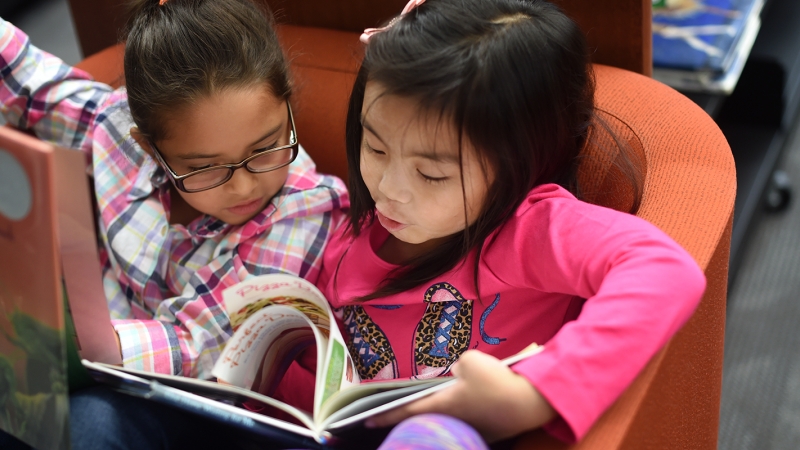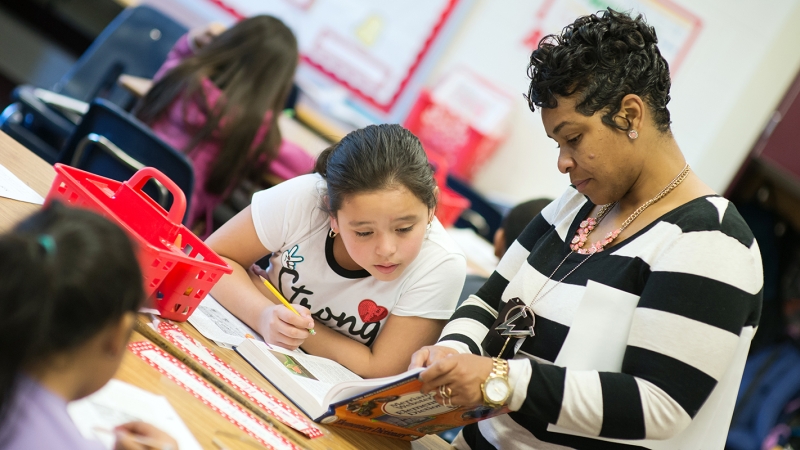
Family Guide to Dyslexia: Elementary Schools
Turn to your child’s school for support so that together, you can develop a plan to address and monitor your child’s needs.
Concerned about your child’s reading and/or spelling? Worried that your child might have dyslexia? Turn to your child’s school for support so that together, you can develop a plan to address and monitor your child’s needs. If your child currently receives special education services, please consult with your child’s IEP team.
Family Action
Talk to your child’s teacher about your child’s performance at school. Consider asking questions such as the following:
- How strong are my child’s early literacy skills?
- How is my child doing in decoding, fluency, and spelling?
- How do my child’s recent assessment results relate to grade level expectations?
- Has my child received any extra help or interventions?
Also, share your concerns about your child’s reading and writing as well as observations from home.
Classroom Action
Your child’s teacher may take steps to provide extra support for your child. These may include the following:
- Additional small group instruction delivered in reading or writing workshop;
- Small group intervention delivered during reading or writing workshop;
- Small group intervention delivered during another part of the day, such as an intervention block.
These supports may be provided by the classroom teacher, an instructional assistant, or a resource teacher.
School Action
Depending on the intervention your child needs, and depending on how your child responds to the extra support provided by the classroom teacher, the teacher may elicit the help of the multidisciplinary team responsible for planning and monitoring interventions, sometimes called the Responsive Instruction Core Team.
The team may consult with your child’s teachers and collect work samples. The team may review your child’s assessment results to plan next steps.
Next steps may include an intensive intervention or a referral to the Local Screening Committee.1
1 If at any time you suspect your child has a disability, you have the right to make a referral to the Local Screening Committee. Visit https://www.fcps.edu/registration/child-find for information.
Local Screening Committee
At any time, you may refer your child to the Local Screening Committee through the Child Find2 process. The Local Screening Committee will meet to review your child’s literacy performance, extra support, and progress. At this meeting, you will have the opportunity to share your concerns. Some issues the team may discuss include the following:
- Review the impact of any extra support already received;
- Determine if further evaluation is necessary;
- Plan future supports that address areas of struggle;
- Consider the need for a structured literacy program.
2 https://www.fcps.edu/registration/child-find
Connect with the Right Contact
If you feel you need additional support in identifying and meeting your child’s needs, you may connect with the appropriate regional point of contact for dyslexia. These points of contact can support you with the following areas of concern:
- Dyslexia Identification & Evaluation
- Regional representative from School Psychology Services
- Core Instruction & Assessment
- Regional representative from Instructional Services Department
- Intervention & Accommodations
- Regional representative from Office of Special Education Instruction
Additional Resources
For regional points of contact, a matrix of structured literacy programs, and additional resources visit the Dyslexia Information page.
For more information: Gina North, FCPS Dyslexia Specialist, [email protected]
FCPS Family Guide to Dyslexia: Elementary School
© 2017 Fairfax County School Board. All rights reserved. This material may not be reproduced, displayed, modified or distributed without the express prior written permission of the copyright holder. For permission, contact the FCPS Department of Special Services, Office of Special Education Instruction, Willow Oaks Corporate Center, 8270 Willow Oaks Corporate Drive, Fairfax, VA 22031.





